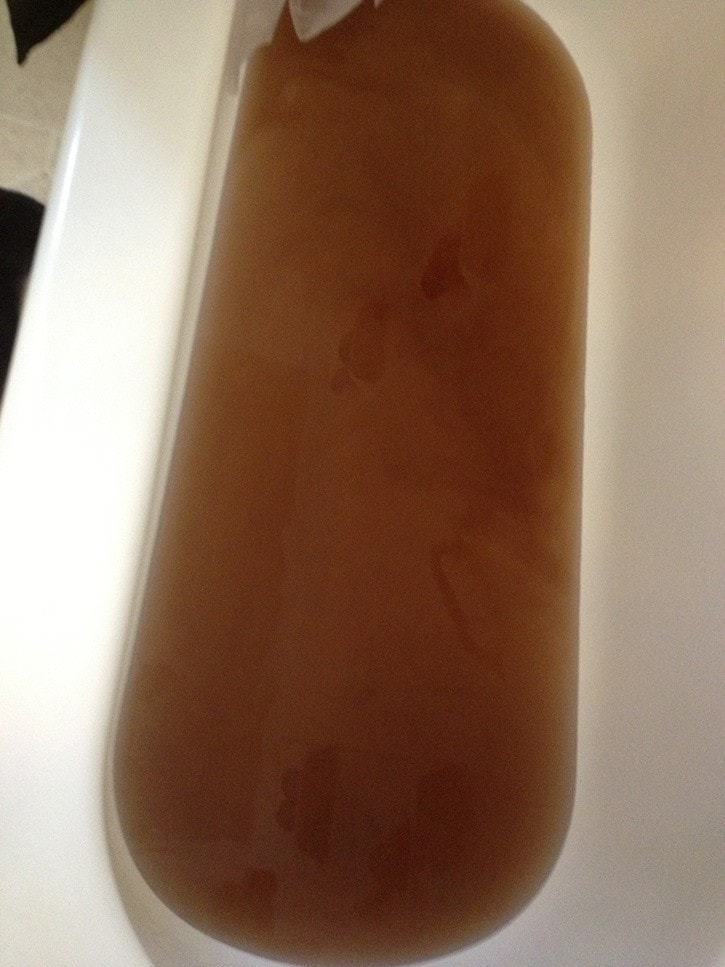Living in Burns Lake is not without its challenges, but Al Ford wants to know why the challenge has to include paying for often unusable household water.
“It’s not right to pay for water I can’t use,” said Burns Lake resident Al Ford.
“It’s not constant, but it is year-round and seems to often come at times of high water-volume use,” he added.
He was speaking of the often turbid water that comes out his water faucets and plumbing hook-ups at his Sixth Avenue home. High volume water uses include running a bath or doing a load of laundry.
The Village of Burns Lake (VBL) regularly samples municipal water according to Northern Health (NH) guidelines. In 2013, VBL took 36 water samples at four different sites for analysis by NH.
Burns Lake tap water is perfectly safe according to NH guidelines.
But the one guideline where Burns Lake tapwater exceeds NH standards significantly is with manganese content. Although not a health concern according to NH, it is considered aesthetically undesirable. It can contribute to scaly buildup within pipes, taste bad, and if concentrated enough, stain clothing in a washing machine.
Measured manganese levels in Burns Lake as reported on Dec. 2, 2013, showed levels to be almost six-and-a-half times higher than B.C. drinking water guidelines.
The guideline is 0.05 milligrams per litre of water, and the Dec. 2, 2013 test samples indicated between .323 and .326 milligrams per litre of manganese. These limits are not health related. They are aesthetic limits related to possible staining and palatability.
“Manganese is a naturally occurring mineral in deep water wells,” said VBL director of public works Rick Martin. “The discolouration is caused by the concentration of manganese in the pipe system.”
Part of Ford’s problem, he was told, is that his home is on a dead-end street with no fire-hydrant or other means to flush the pipes. The only way to flush water lines at the end of a cul-de-sac is through residential faucets.
Even if there was a fire hydrant put in on Ford’s street, the village still wouldn’t be able to flush the lines.
“I was told that the village couldn’t flush the water at my address anyway because it was too close to a creek,” Ford said.
Village water is chlorinated as part of the water treatment process. Although a small amount of chlorine is permitted by NH, no chlorine at all is allowed to flow into a fish-bearing stream, something which would happen if Sixth Avenue lines were to be flushed on the street.
There are three options for dealing with turbid water in town. The first and most simple is to let your taps run if the water comes out brown initially. But this isn’t fail-proof and might still result in a soiled load of laundry.
“Running the water in advance will help, but if a pressure fluctuation happens during a cycle there could be a release of concentrated particles,” Martin said. “Sixth Avenue is particularly bad as it is not on a looped system; it is a dead-end and the manganese stops at the end. The hot water tank in every residence acts as a storage for particles as well, so using hot water can exacerbate the problem at times.”
Another solution would be a system-wide fix. The village could install manganese filters at the source. Martin said that Houston is moving in that direction, at a capital cost projected to be $4.2 million, along with an annual $100,000 in associated maintenance costs.
A middle way is for homeowners to install their own manganese filter systems, something which the village suggested to Ford.
A manganese filtration system was installed, said Martin, in the VBL office for about $160. Filters for the system cost $20, and need to be replaced on a schedule depending upon volume and levels of manganese. Martin said he replaces his home filter twice a year.
With three options for dealing with turbid water, and only two producing reliable results, it comes down to a question of how much would it cost to solve the problem, and who pays for it.
“I don’t know what the solution is,” Ford said. “But I don’t want to be charged for water if I have to pay for a filter system.”
“If taxpayer dollars can pay for a water filtration system at the village office, why can’t they pay for a filtration system in my house?” Ford asked.
